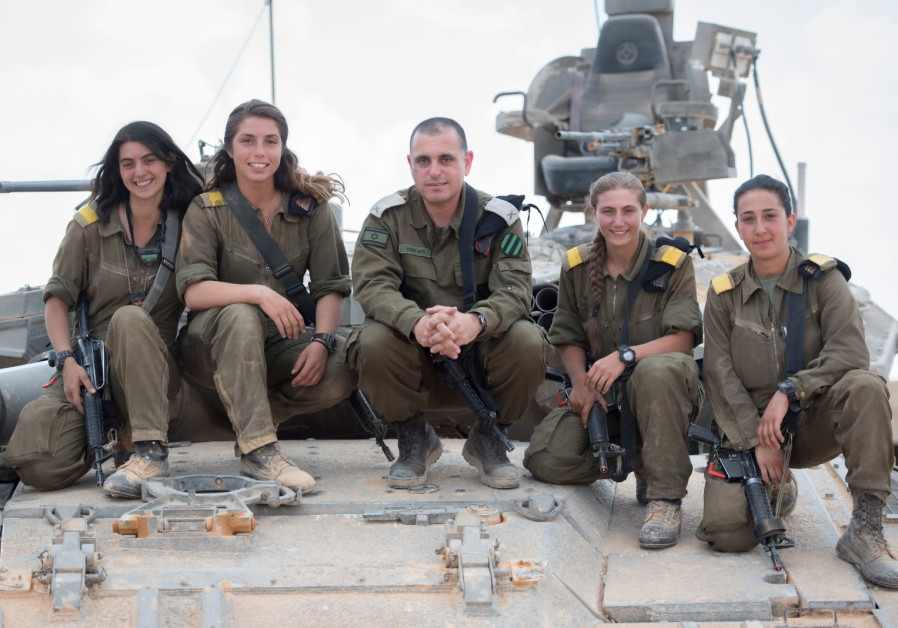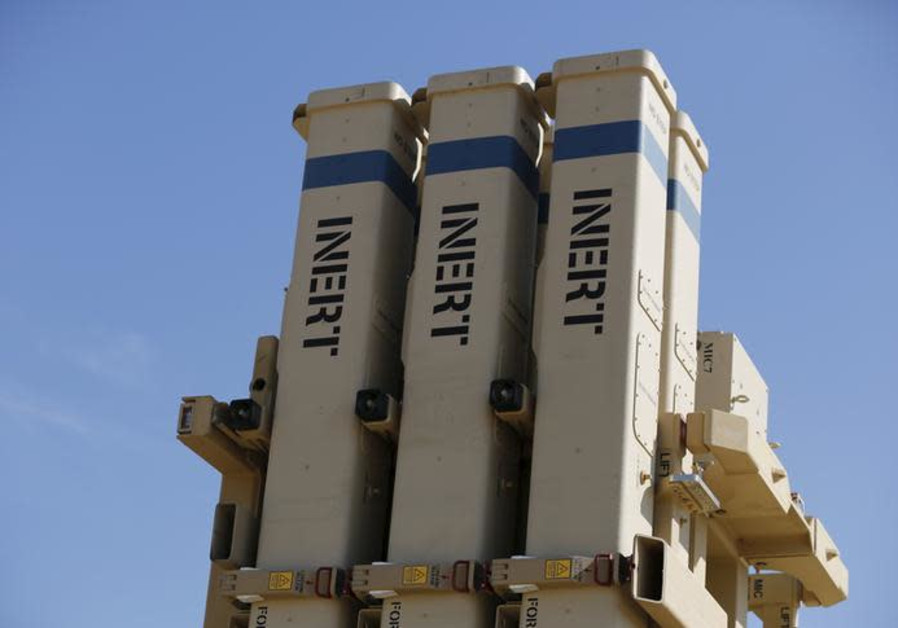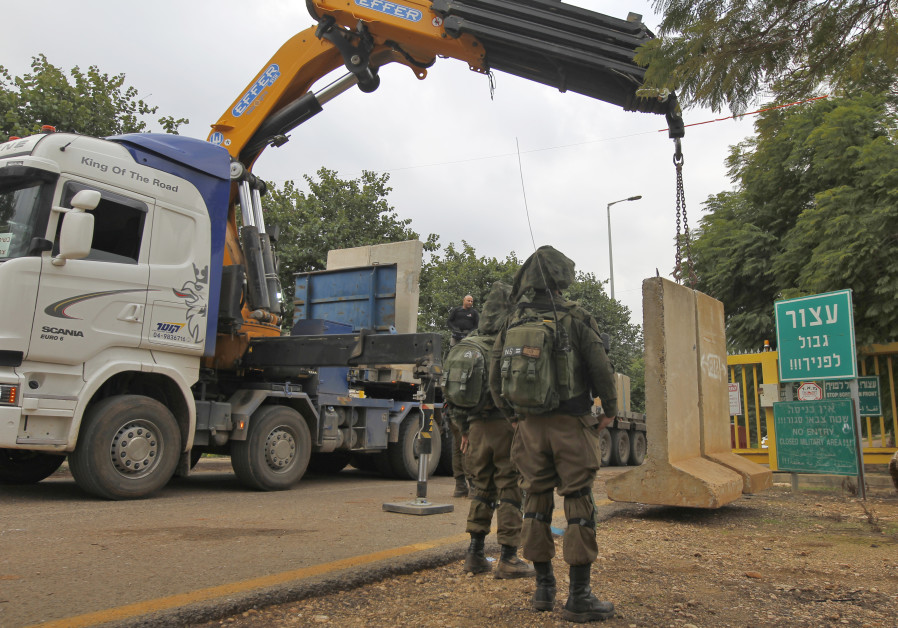Five Highs
1 - Israel becomes the first to use the F-35 in combat
In May, Israel Air Force Commander Maj.-Gen. Amikam Norkin announced that the IAF had become the first country to use the F-35 in a combat role in the Middle East, using the stealth fighter on two operational missions on different fronts in the region. Norkin made the comments while showing a picture of one Israeli F-35 Adir flying over the Lebanese capital of Beirut during the day. He did not mention when the picture was taken.
Israel declared initial operational capability of the world’s most advanced jet in December after receiving nine F-35 Adirs. Israel’s air force is expected to receive a total of 50 planes built by Lockheed Martin to make two full squadrons by 2024, receiving two more of the jets in November, which brings the total amount currently flown by Israel to 14. The IAF is set to decide in the coming months whether to purchase a third squadron of F-35 jets or Boeing’s latest F-15I.
2 - First four female tank commanders commissioned


Nevertheless, the military pushed forward, with 15 female recruits beginning basic training in southern Israel. While two of them dropped out after just two weeks, the 13 remaining recruits moved to Shizafon, where they were divided into three squads headed by a senior tank commander. They completed their tank training on the Merkava Mark 3 model, which they would be operating. The IDF has stressed that there will be no mixed-gender tank crews and that female tank crews will not be part of battalions which would operate in enemy territory. They have been deployed to the Egyptian border with Division 80.
3 - First use of David’s Sling


A year after becoming operational, Israel used its David Sling interceptor system for the first time, launching two missiles against two SS-21 Tochka tactical ballistic missiles launched from Syria. The final piece of Israel’s air defense shield, also known as the Magic Wand, it became operational the previous April, providing Israel with a comprehensive protective umbrella able to counter threats posed by both short- and mid-range missiles used by terror groups in Gaza and Hezbollah, as well as the threat posed by more sophisticated long-range Iranian ballistic missiles.
Israel’s air defenses now include the Iron Dome, designed to shoot down short-range rockets, and the Arrow system which intercepts ballistic missiles outside of the Earth’s atmosphere. The David’s Sling missile defense system is designed to intercept tactical ballistic missiles and medium- to long-range rockets, as well as cruise missiles fired from ranges of between 40 to 300km.4 - First Ethiopian Pilot
In December the Israel Air Force gave wings to its first Ethiopian pilot to graduate the military’s prestigious pilots course. Lt.Y, whose full name cannot be published for security reasons, will serve as a navigator in Israeli fighter jets. According to the IAF, of the approximately 600 cadets who passed the preliminary tests into the prestigious pilots course, about two thirds drop out in the first year of the three-year long intensive pilots course and only 30-40 of those who stayed will successfully complete the course.
Close to 140,000 Ethiopian Jews live in Israel, most having been flown to Israel in Operation Moses and Operation Solomon in the mid-1980s to early 1990s. But Ethiopian-Israelis have struggled to integrate into Israeli society. The community has long accused the state, including the military of racism, neglect, brutality and abuse against members of the community and they have been slow to rise through the ranks in the military. Lt. Y, who studied at the Eli Mechina, was praised by the head of the Mechina Rabbi Yehuda Sadan as “serious and dedicated” towards his community.
5 - Operation Northern Shield


In the month since the beginning of the operation, five tunnels have been found and the military has begun systematically destroying them. The IDF believes that the tunnels were part of Hezbollah’s “Conquer the Galilee” plan and would have been used by the group’s elite Radwan unit to infiltrate into Israel to take control of communities along the border and kill as many civilians and soldiers as possible.
Five Lows
1 - First loss of an Israeli aircraft in a combat situation in over a decade In a major flare up on Israel’s northern border in February, an Israel F-16i was struck by a Syrian air-defense missile and crashed near Kibbutz Harduf in the Beit Netofa Valley in the Lower Galilee. The two Israeli pilots were injured after they ejected from the jet and had been evacuated to Rambam Medical Center in Haifa. They returned to operational duty not long after being released from hospital.
Their jet was struck by a Syrian anti-aircraft missile during operations to strike Iranian targets in the war-torn country following the infiltration of an armed Iranian drone into Israeli territory. It was the first time that Israel lost an aircraft in a combat situation since 2006, when an Israeli Yasour (Sikorsky CH-53) helicopter was shot down over Lebanon, killing the entire crew including the first female flight mechanic in Israel’s heavy transport helicopter fleet.
2 - Israel closes Operation Good Neighbor
After two years of extensive humanitarian activity, the Israeli military shut down Operation Good Neighbor. The operation, which was launched in June 2016, ended after the regime of Syrian President Bashar Assad re-took control of the Syrian Golan Heights, seven years after losing it to rebel groups.
As part of the IDF's extensive aid efforts and in addition to those treated at a field clinic, over 4,900 Syrian patients were treated in Israeli hospitals. Several women also gave birth at Nahariya Western Galilee Hospital. Israel also transferred 630 tents, 40 vehicles, 20 generators, an estimated 1,100,000 liters of fuel, approximately 26,000 palettes of medical equipment and medicine, 1,700 tons of food, 49,000 packages of baby food and 8,200 packages of diapers, and 350 tons of children’s clothing. Another 20 mobile caravans to use as clinics or classrooms were also given to Syrian civilians with the help of the IDF.
3 - First Israeli soldier killed on Gaza front in four years
Described as the most serious incident along the border fence with Gaza since Operation Protective Edge in 2014, 20-year-old St.-Sgt. Aviv Levi from Petah Tikva was killed after he was struck in the chest by a sniper’s bullet in the area of Kibbutz Kissufim. He was killed two weeks before his 21st birthday and three months before the end of his military service.
Tensions with Gaza have significantly risen, with months of violent weekly protests along the border fence. The riots, which have also seen the launching of incendiary aerial devices such as kites and balloons, have also seen Palestinians throwing explosive devices and sniping at IDF troops.
A week after Levi was killed, an IDF officer was hit by a sniper in the same area. The incident occurred after some 20 Palestinian youth began violently demonstrating 400 meters from the border fence. When an IDF force arrived to disperse the youth, a sniper targeted the soldier. While the IDF believes that the ambush was not carried out with Hamas’s approval, as per policy, it holds the terrorist group responsible for all events occurring in the Strip.
4 - IDF loses elite officer in botched Gaza operation
An elite IDF officer was killed in Gaza after a firefight erupted with Palestinian militants during a special operation in the southern Gazan city of Khan Yunis in mid-November. The military said that the purpose of the botched special forces operation, whose full details remain under strict military censorship, was not to kill or kidnap Hamas militants. According to reports, the troops were there to plant listening devices.
Following the firefight in which six Hamas militants including Khan Yunis commander Nur Barakeh, the militant group fired a Kornet anti-tank missile toward a bus at the Black Arrow site next to the Gaza border, seriously injuring a soldier. Over the next 48 hours close to 400 rockets and mortars were fired into southern Israel by Hamas and Islamic Jihad, leading to the death of a Palestinian man in the city of Ashkelon. Israel struck back by targeting dozens of military sites in the coastal enclave before a ceasefire was struck between the two sides.
5 - Former Israeli minister caught spying for Iran
Former energy and infrastructure minister Gonen Segev was charged with spying for Iran in June. Segev, who also spent time in jail for drug smuggling, forgery and fraud, was extradited from Equatorial Guinea in May on suspicion of assisting the enemy in a time of war, spying against the State of Israel and providing intelligence to the enemy.
Segev is suspected of providing his Iranian handlers with intelligence related to, among other things, Israel’s energy industry, security sites, buildings and officials in Israeli political and security bodies. A report by Channel 10 said that the disgraced former minister admitted to the charges in order to help Israel and return as a “hero.” While Israeli security officials do not think that Segev gave any sensitive and classified intelligence to Tehran, Lebanon’s Al-Akhbar reported that he provided Iran with “a variety of information that will serve it in the struggle against the Zionist entity.”Edited by Natan RothsteinRead all of the year's top highlights and lowlights:Palestinians | Legal system | Politics | Economy | American politics & relations | Diplomacy | Religion | Culture | Settlements
